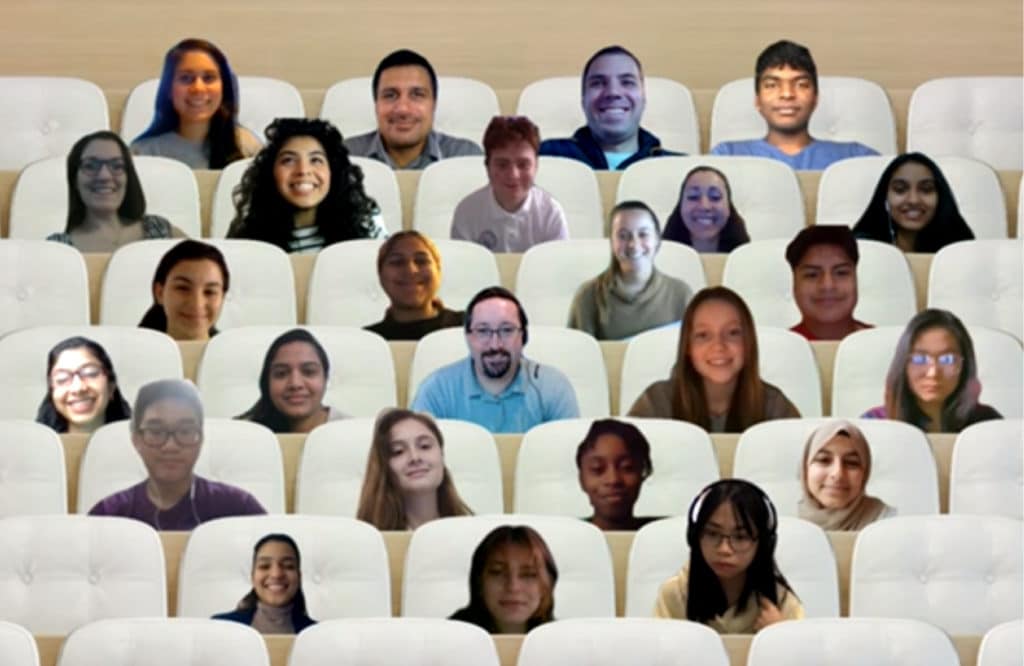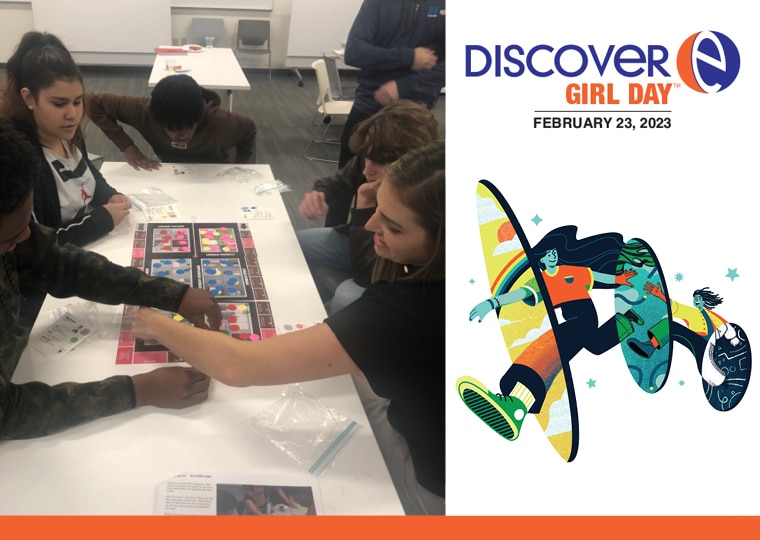
For years, STV has offered high school students who are interested in a career in our industry a unique, hands-on experience via its participation in the ACE (Architecture Construction Engineering) Mentor Program of Greater New York. Every Thursday during the school year, students from across New York City, Long Island and Westchester County, would gather in STV’s New York office to receive in-person guidance and instruction from the firm’s mentor team of professional architects, engineers and construction managers, while also learning about teamwork, collaboration and innovation.
Like most in-person group activities, this weekly routine suddenly ceased in March 2020 at the onset of the COVID-19 pandemic. At that point, both STV’s mentors and its student team were faced with solving a problem that was arguably tougher than many of the engineering tasks they solved on a weekly basis: how to continue to provide a top-notch collaborative educational experience in a virtual environment.
“When we first restarted the program last Spring, certain elements of the virtual meeting platforms that fostered collaboration weren’t available to us,” said Jeffrey Messinger, P.E., LEED AP BD+C, vice president and national transportation facilities practice leader, and leader of STV’s ACE of Greater New York team for more than 15 years. “It felt like mentors were simply talking to the students, like a lecture, instead of the organic workshop atmosphere that we got in-person.”
As a result, the remainder of the 2019-2020 school year was challenging for Messinger and the rest of STV’s ACE team. There was drop off in student participation, and lots of trial-and-error from the mentors to determine the best way to engage students in this new reality.
“The main challenge was how to form small groups and connections using a virtual platform,” Messinger said.
Messinger, and the STV team’s co-leader, Dejana Harris, EIT, engineering specialist, also needed to devise ways to keep their own slate of mentors involved.
“In addition to figuring out how to best structure things for the students, we also had to make sure we supported our mentors and kept them engaged,” said Harris. Harris herself was an ACE participant as a high school student, who immediately joined the STV team as a mentor when she came to work for the firm.
Going into the 2020-21 school year, STV’s mentors regrouped, and using their experiences from the previous few months, implemented a plan to help the program run more smoothly. Messinger and his team were pleased to see they had the same number of student participants this year as the year prior.
One of the best changes incorporated into the virtual format was the use of “breakout rooms” in Zoom. These breakout rooms allowed the mentors to split the students into smaller collaborative groups, just as they used to do during in-person instruction.
“The breakout rooms have helped make things more intimate and we encouraged students to put their cameras on, so everyone can see each other,” Messinger said. “We try to call on students, to get them to speak and stay engaged. We learned that the most important thing is to simply keep them involved. So, we assign students specific duties and set up specific activities for them to participate in. We even allow students to take control of the screen during sessions, so it feels more hands-on for them.”
Veshal Kumar, a high school junior and a past and current participant on STV’s team agreed that these changes were crucial.
“This year, the mentors had more time to plan and prepare, and were able to create more enjoyable lessons and activities,” Kumar said. “They worked hard to have a safe learning environment where we can all learn together and have fun while doing so. The virtual mentorship meetings are definitely fulfilling my expectations of the program.”
Despite the challenges that needed to be overcome, both Messinger and Harris agree that continuing the program was vital.
“ACE allows students to develop interest in the industry and explore certain disciplines,” Harris said. “There are so many routes a student can take if they want to be an engineer, but it can often be difficult to understand what suits you best. I’m glad STV wanted to continue its involvement in the program and is committed to nurturing the next generation of engineers.”
It’s uncertain when ACE will return to a full in-person experience. But one thing that will remain constant is the impact the program has had on the lives of both the student participants and its mentors.
“ACE is the perfect way to spark interest in young people and steer them towards a career in engineering,” Messinger said. “In fact, several of our mentors participated in the program while in high school. That’s direct proof that ACE leads directly to internships and positions and that connecting early can determine a young person’s professional path.”




